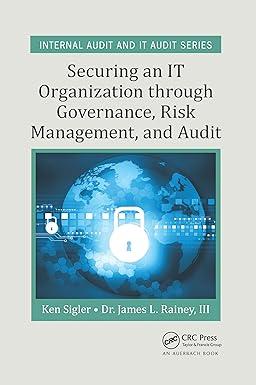





Lease or Sell Felix Company owns a equipment with a cost of $361,800 and accumulated depreciation of $55,400 that can be sold for $275,600, less a 5% sales commission. Alternatively, Felix Company can lease the equipment to another company for three years for a total of $286,300, at the end of which there is no residual value. In addition, the repair, insurance, and property tax expense that would be incurred by Felix Company on the equipment would total $16,300 over the three years. Prepare a differential analysis on March 23 as to whether Felix Company should lease (Alternative 1) or sell (Alternative 2) the equipment. For those boxes in which you must enter subtracted or negative numbers use a minus sign. Differential Analysis Lease Equipment (Alt. 1) or Sell Equipment (Alt. 2) March 23 Differential Effect Lease Equipment Sell Equipment (Alternative 1) on Income (Alternative 2) (Alternative 2) Revenues Costs Income (Loss) Should Felix Company lease (Alternative 1) or sell (Alternative 2) the equipment? Learning Objective 1 Product T has revenue of $194,200, variable cost of goods sold of $114,600, variable selling expenses of s33,700, and fixed costs of $58,600, creating a loss from operations of $12,700. Prepare a differential analysis as of May 9, to determine whether Product T should be continued (Alternative 1) or discontinued (Alternative 2), assuming fixed costs are unaffected by the decision. If an amount is zero, enter "o". For those boxes in which you must enter subtracted or negative numbers use a minus sign. Differential Analysis Continue Product T (Alt. 1) or Discontinue Product T (Alt. 2) May 9 Differential Effect Continue Product Discontinue Product on Income T(Alternative 1) T (Alternative 2) (Alternative 2) Revenues Costs: Variable cost of goods sold Variable selling expenses Fixed costs Income (Loss) s Determine if Product T should be continued (Alternative 1) or discontinued (Alternative 2). Make or Buy A restaurant bakes its own bread for a cost of $140 per unit (100 loaves), including fixed costs of s32 per unit. A proposal is offered to purchase bread from an outside source for $98 per unit, plus $7 per unit for delivery. an amount is zero, enter "O". For those boxes in which Prepare a differential analysis dated July 7 to determine whether the company should make (Alternative 1) or buy (Alternative 2) the bread, assuming that fixed costs are unaffected by the decision. you must enter subtracted or negative numbers use a minus sign. Differential Analysis Make Bread (Alt. 1) or Buy Bread (Alt. 2) July 7 Differential Effect Make Bread Buy Bread (Alternative 1) (Alternative 2) on Income (Alternative 2) Sales price $0 $0 SO Unit Costs: Purchase price Delivery Variable costs Fixed factory overhead Income (Loss) Determine whether the company should make (Alternative 1) or buy (Alternative 2) the bread. Learning Objective 1 A machine with a book value of $247,400 has an estimated six-year life. A proposal is offered to sell the old machine for $215,800 and replace it with a new machine at a cost of $281,000. The new machine has a six-year life with no residual value. The new machine would reduce annual direct labor costs from $50,200 to $40,200. Prepare a differential analysis dated October 3 on whether to continue with the old machine (Alternative 1) or replace the old machine (Alternative 2). If an amount is zero, enter "0". For those boxes in which you must enter subtracted or negative numbers use a minus sign. Differential Analysis Continue with Old Machine (Alt. 1) or Replace Old Machine (Alt. 2) October 3 Continue with Replace old Differential Effect Old Machine Machine on Income (Alternative 1) (Alternative 2) (Alternative 2) Revenues: Proceeds from sale of old machine Costs: Purchase price Direct labor (6 years) Income (Loss) Should the company continue with the old machine (Alternative 1) or replace the old machine (Alternative 2)? Process or Sell Product T is produced for $3.30 per pound. Product T can be sold without additional processing for $4.01 per pound or processed further into Product U at an additional cost of so.36 per pound. Product U can be sold for $4.36 per pound. Prepare a differential analysis dated November 15 on whether to sell T (Alternative 1) or process further into U (Alternative 2). If required, round your answers to the nearest whole dollar. For those boxes in which you must enter subtracted or negative numbers use a minus sign. Differential Analysis Sell Product T (Alt. 1) or Process Further into Product u (Alt. 2) November 15 Process Further Differential Effect Sell Product T into Product on Income (Alternative 1) U (Alternative 2) (Alternative 2) Revenues, per unit Costs, per unit Income (Loss), per unit Should Product T be sold (Alternative 1) or processed further into Product u (Alternative 2)? Accept Business at Special Price Product R is normally sold for $44 per unit. A special price of $34 is offered for the export market. The variable production cost is $26 per unit. An additional export tariff of 13% of revenue must be paid for all export products. Assume that there is sufficient capacity for the special order. Prepare a differential analysis dated March 16, on whether to reject (Alternative 1) or accept (Alternative 2) the special order. If required, round your answers to two decimal places. If an amount is zero, enter "0". For those boxes in which you must enter subtracted or negative numbers use a minus sign. Differential Analysis Reject Order (Alt. 1) or Accept Order (Alt. 2) March 16 Differential Effect Reject Order Accept Order on Income (Alternative 1) (Alternative 2) (Alternative 2) Revenues, per unit Costs: Variable manufacturing costs, per unit Export tariff, per unit Income (Loss), per unit Should the special order be rejected (Alternative 1) or accepted (Alternative 2)












